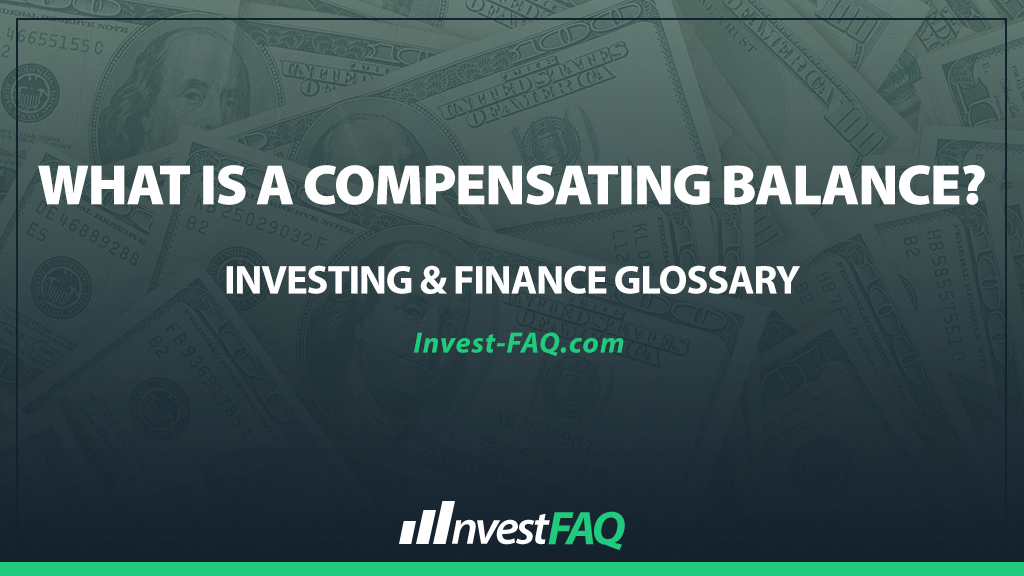
Compensating Balance
Contents
A compensating balance is a minimum account balance that a borrower is required to maintain with a lender as a condition for obtaining a loan. This requirement is part of the loan agreement and acts as a form of security for the lender, ensuring some level of cash flow or liquidity is always available.
Businesses often encounter the requirement for a compensating balance when negotiating loan terms.
This balance can affect the effective interest rate of a loan, as it reduces the amount of usable funds available to the borrower. For lenders, it represents a safeguard and a means to enhance the profitability of lending by ensuring funds remain deposited in their institution.
Example of a Compensating Balance
“Citywide Construction” secures a loan of $500,000 from “MetroBank,” which requires a compensating balance of 10%. This means Citywide must maintain a minimum balance of $50,000 ($500,000 * 10%) in its account at all times throughout the loan’s duration.
Loan Amount: $500,000
Compensating Balance Requirement: 10%
Required Compensating Balance: $50,000
Citywide effectively has $450,000 of the loan amount available for use, as $50,000 is locked as a compensating balance with MetroBank.
In this scenario, while Citywide Construction has access to a $500,000 loan, the requirement to keep a $50,000 compensating balance with MetroBank effectively reduces the usable loan amount to $450,000.
This arrangement benefits MetroBank by ensuring that a portion of the loaned funds remains deposited, enhancing the bank’s liquidity.
For Citywide, it means planning for this requirement in their cash flow management, as the compensating balance might impact the actual cost of borrowing when considering the reduced availability of funds.
Significance for Investing & Finance
The concept of a compensating balance holds significance in accounting and financial management for several reasons:
Effective Cost of Borrowing: It impacts the effective interest rate and the actual cost of borrowing for businesses, as a portion of the loaned funds is not available for use.
Liquidity Management: Businesses need to account for the compensating balance in their liquidity management strategies, ensuring compliance with loan agreements while maintaining operational cash flow needs.
Financial Reporting: Compensating balances must be disclosed in financial statements, particularly in notes if they are significant, affecting how liabilities and assets are presented.
Loan Negotiations: Understanding the impact of compensating balances is crucial during loan negotiations, as it affects the overall terms and conditions of the loan, including interest rates and available credit.
In summary, a compensating balance is a critical consideration in loan agreements and financial management, affecting both the borrower’s liquidity and the lender’s security.
Businesses must carefully consider the impact of compensating balances on their cash management strategies and the effective cost of borrowing, ensuring transparent accounting practices and compliance with financial reporting standards.
FAQ
What is a compensating balance?
A compensating balance is a minimum account balance that a borrower is required to maintain with a lender as part of the terms for a loan or line of credit, serving as a form of credit enhancement for the lender.
How does maintaining a compensating balance affect a business’s access to funds?
Maintaining a compensating balance can restrict a business’s access to its full range of funds, as a portion of its capital is tied up as a requirement for obtaining or maintaining a loan or credit line.
Can a compensating balance requirement be negotiated?
Yes, the requirement for a compensating balance is often negotiable and can vary based on the relationship between the borrower and the lender, as well as the borrower’s creditworthiness and the loan terms.
What happens if a borrower fails to maintain the required compensating balance?
If a borrower fails to maintain the required compensating balance, it may result in additional fees, higher interest rates, or even the revocation of the loan or credit line, depending on the terms agreed upon with the lender.
